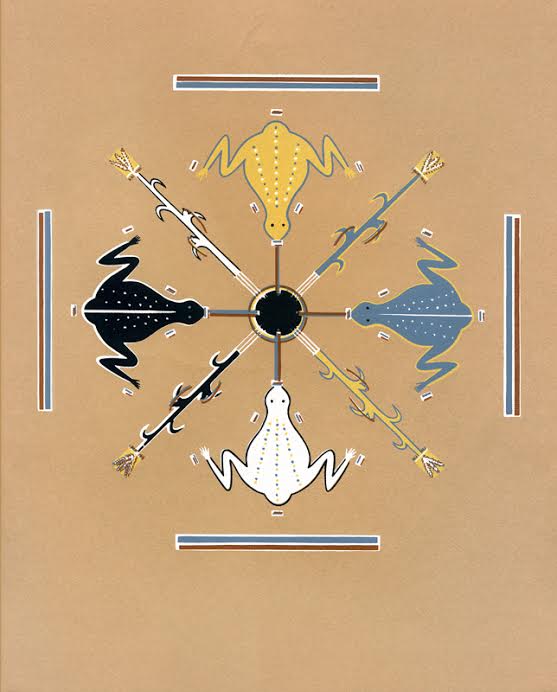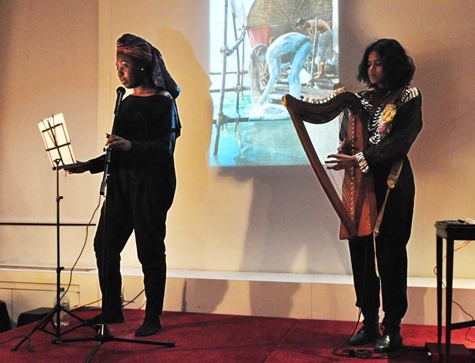ARAS Connections: Image and Archetype - 2018 Issue 1

As is often the case, this edition of ARAS Connections contains an article that was brought to us through the Art and Psyche Conferences, the most recent of which was held in Sicily in 2015. This time it is a paper that one of the presenters in Sicily was inspired to send in. It is hard to believe that we have been publishing ARAS Connections since the end of 2006 during which time we have published an astonishing 114 articles. The first Art and Psyche Conference was held in San Francisco in 2008 after which we began to publish their papers. Art and Psyche has held three conferences and with this new paper, it is worth our celebrating the fact that the Art and Psyche conferences have contributed 30 papers to ARAS Connections. A wonderfully synergistic and collaborative relationship has developed between Art and Psyche and ARAS, which should not come as a surprise because Ami Ronnberg, our curator and Diane Fremont, an ARAS Board member, have partnered with Linda Carter to form the core of the ongoing ARAS/Art and Psyche working group to which Allison Tuzo, our head of digital media has lent her superb technical support. We are deeply grateful to Linda, Diane and Ami for their contributions as editors of these articles. In short, Art and Psyche has been a major contributor to ARAS Connections and ARAS has supported Art and Psyche by providing a perfect vehicle for getting their papers into the world.
From the perspective of ARAS, this collaboration is not just about the number of papers that Art and Psyche has contributed, but even more that it symbolizes an essential part of the ARAS mission to bring our unique archives and approach to the symbolic image into meaningful dialogue with the contemporary world and to contribute from our deep well of cross cultural research to an ongoing, keen interest in the spontaneous occurrence of archetypal imagery in every culture and every age, including our own. It is wonderful that so many scholars, therapists, artists, students, and citizens of the world have The Art and Psyche Conferences in which to present their work. And in turn for ARAS to offer the possibility of publishing their creative explorations in the unique forum of ARAS Connections which allows the almost unlimited reproduction of color and black and white images through the miracle of online digital publication that combines with fair use laws to permit the use of images without copyright by nonprofit organizations for educational purposes. Art and Psyche together with ARAS Connections have actually created a new and vital forum for the exploration of symbolic imagery in the modern world. This encourages the researches of individuals from all walks of life to prepare papers that will have an appreciative audience, both live at the conferences and through digital distribution of ARAS Connections which reaches close to 10,000 people quarterly.
With all these different elements in play, it is an honor for this edition of ARAS Connections to announce the call for papers for the next Art and Psyche Conference to be held in Santa Barbara in 2019. Please see the announcement below.
"Intruders," "Animal Roots" and "Mother Earth": Tracking the Art Complex in the Work of Emily Carr

In highlighting symbolic events in the life of Canadian artist Emily Carr—her losses, her growing pains, her joys, and her achievements—a case is made for a transformative relationship with the art complex. These events are initially narrated providing a backdrop to the first half of her life. At age 56, however, she had a numinous encounter that symbolized the transition to the second half of life, ushering in a new relationship with an autonomous inner intruder— and so to signal this movement, the narration becomes analysis and interpretation while maintaining the storyline. For the next decade, her psychological maturation was reflected in developing her own painting methods, writing, and a more conscious relationship to self. In tracking these events and her accompanying psychological states, feelings, and emotions, there is support for Jung’s claim that the only genuine cure for neurosis is to grow out of it by attending individuation and thus to embrace “the approach to the numinous.” For Carr, such experiences arose through her relationship with “Mother Earth,” with the wildness of the Canadian west coast.
The early years
Long ago, there was a girl born, the fifth daughter to a devoutly Protestant family. She was the first and only daughter birthed in the rugged west coast of Canada, the first “Canadian” born (on 13 December 1871) to a recently emigrated English family. She was born in wilderness, born during a storm—a symbol with which she identified and has claimed to have “tossled and wrestled with ever since” (Riley, n. d., part 1). Her name was Emily Carr. Emily had a wild spirit that was out of tune and out of time with the Victorian household of her parents. Her father, “ultra English”—straight, stern, and autocratic—was obeyed by Emily out of sheer fear and reverence (Carr, 1966b, p. 14). Her mother provided a buffer to the harshness of the family but did not mirror, for Emily, the love and acceptance that this extraordinary child so deeply needed. In this way, she was unmothered and remained unseen. Emily’s stubborn and independent character constantly challenged her English upbringing and the norms of her society. She was soon dubbed “Small” by her older sisters—not only because as the youngest girl she was small, but also because she knew nothing of the social ways of sipping tea, nibbling cakes, or acting like a proper lady (Riley, n. d., part 1).
The one place where she did belong was among the “untamed beauty” of her father’s open lily field, to which she escaped when punished or lonely (Riley, n. d., part 1). These escapes were frequent. This field and her closest friends, an imaginary small boy and a luxurious horse, became the “world of Small.”
Unlike her family, who only saw and associated with other English families, Emily was keenly aware of the world around her—especially the native people of the First Nations and the Chinese who kept the city of Victoria, British Columbia, running. In addition, the spectacular coastal environment of Victoria was home to the “cedar and fir that claimed [Emily’s] heart and imagination” (Riley, n. d., part 1). Like many children, Emily was full of curiosity and wonder.
"Indisputable Evidence That The Trip Was Made" Ekphrastic Poetry and Autobiographical Fidelity

1. Beginning
When I started writing ekphrastic poems, I didn’t know that that was what I was doing. I knew nothing about its millenia-old tradition, its theoretical debates, or its creative potential. I had no idea that ekphrasis was the label attached to poems about artworks; the academic flood on the subject was not yet in full spate.
In those first poems, published in the mid-1970s, I was doing no more than putting on record my responses to my first encounters with works by the South African artists Judith Mason and Alexis Preller, with a single international nod to Picasso’s Don Quixote, unaware that such responses had become one of the main functions of modern ekphrasis. At that juncture, the “voice” of the poem was autobiographically mine as far as I could make it.
It was 1989 before I wrote another ekphrastic piece, followed by two more eight years later; all of them based on photographs of one sort or another. (In some circles, photographs were not yet included as artworks. Nowadays, the definition is rather more accommodating.) Thereafter, nothing until 2011. In fact, I published no poetry of any sort between 2001 and 2011. That hiatus was the outcome of a need for time and space to discover another voice, another modus operandi. I had nothing to say and no satisfactory means of saying it. Silence was inevitable.
The decade-long silence came to an end in 2011, when my wife (a poet writing in Afrikaans) and I were invited to join Marjorie Human, the artist, in the Allooi 2011 Poetry/Art Exhibition as part of the Volksblad annual Arts Festival in Bloemfontein in South Africa’s Free State province. The project sought to blend art and poetry in whatever creative ways the poets and the artists thought fit. The project focused our creative attention on what I was now coming to understand as ekphrasis.
Then, when ARAS Connections opened its Poetry Portal in 2012, I decided to risk a submission. I have been writing ekphrastic poetry steadily since then.
2. Autobiography and ekphrasis
Predictably, modern ekphrasis has been fraught with critical debates and academic skirmishes on the subject. However, as a poet and translator, I was less interested in theory and rather more concerned with the relationship between autobiography and ekphrasis as a practice. I’m one of those who believe that an individual’s written output, in whatever genre, is always autobiographical to some extent. I mention this because it exemplifies the so-called “reveal vs. conceal” dilemma that poets face frequently, a dilemma made more complex by any intimate materials that they might want to explore poetically. Putting one’s private life into a public arena, even the small one of poetry readership, is a matter of subtlety and caution rather than the in-your-face and stuff-the-consequences approach of some contemporary poets. Perhaps such writers have no wish to compromise their truth, no matter how brash or hurtful, for any sort of harmony, domestic or otherwise. Nonetheless, I feel that writers have an ethical responsibility not to malign those with whom they have shared private lives at one time or another.
Readers may recall the controversy surrounding Robert Lowell’s volume, The Dolphin (1973). It earned a good deal of negative criticism, not only because he had quoted from his ex-wife’s private letters, which critics regarded as a questionable practice in itself, but also because he had actually altered their content. In a letter to him, his friend, Elizabeth Bishop, called it “infinite mischief”, asking if he wasn’t “violating a trust”. She states unequivocally: “art just isn’t worth that much.” And many agreed with her.
Poetry Portal

We want to share some great photos of our most recent Ekphrazein event. The thematic focus of the night was ashes, and each artist performed against a projection of their chosen ash image. The program began with multimedia artist Akeema-Zane reading poetry while accompanied by harpist Elsz. Poet Geoffrey Olsen was second on the bill, which concluded with a performance of improvised music and dance featuring Jason Kao Hwang (violin), Devin Brahja Waldman (saxophone), Megumi Eda (dance), and Yoshiko Chuma (dance). The presentations ranged between painstaking poetic craft and the playful abandon of free jazz, with each set activating a charged intimacy between artist and audience. Photos by Jaime Thomas and Tal Hurwitz.





Contents
Become a Member of ARAS!
Become a member of ARAS Online and you'll receive free, unlimited use of the entire archive of 17,000 images and 20,000 pages of commentary any time you wish—at home, in your office, or wherever you take your computer.
The entire contents of three magnificent ARAS books: An Encyclopedia of Archetypal Symbolism, The Body and The Book of Symbols are included in the archive. These books cost $330 when purchased on their own.
You can join ARAS Online instantly and search the archive immediately. If you have questions, please call (212) 697-3480 or email info@aras.org
We Value Your Ideas
As our newsletter grows to cover both the ARAS archive and the broad world of art and psyche, we're eager to have your suggestions and thoughts on how to improve it. Please send your comments to info@aras.org. We look forward to your input and will reply to every message.
Subscribe
If you're not already a subscriber and would like to receive subsequent issues of this newsletter by email at no cost, e-mail us at newsletter@aras.org.
